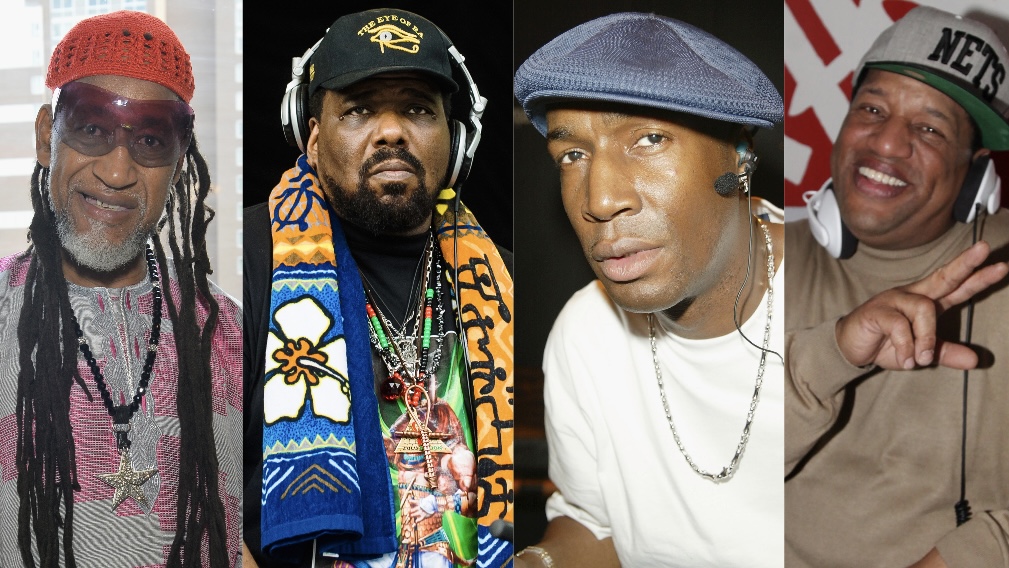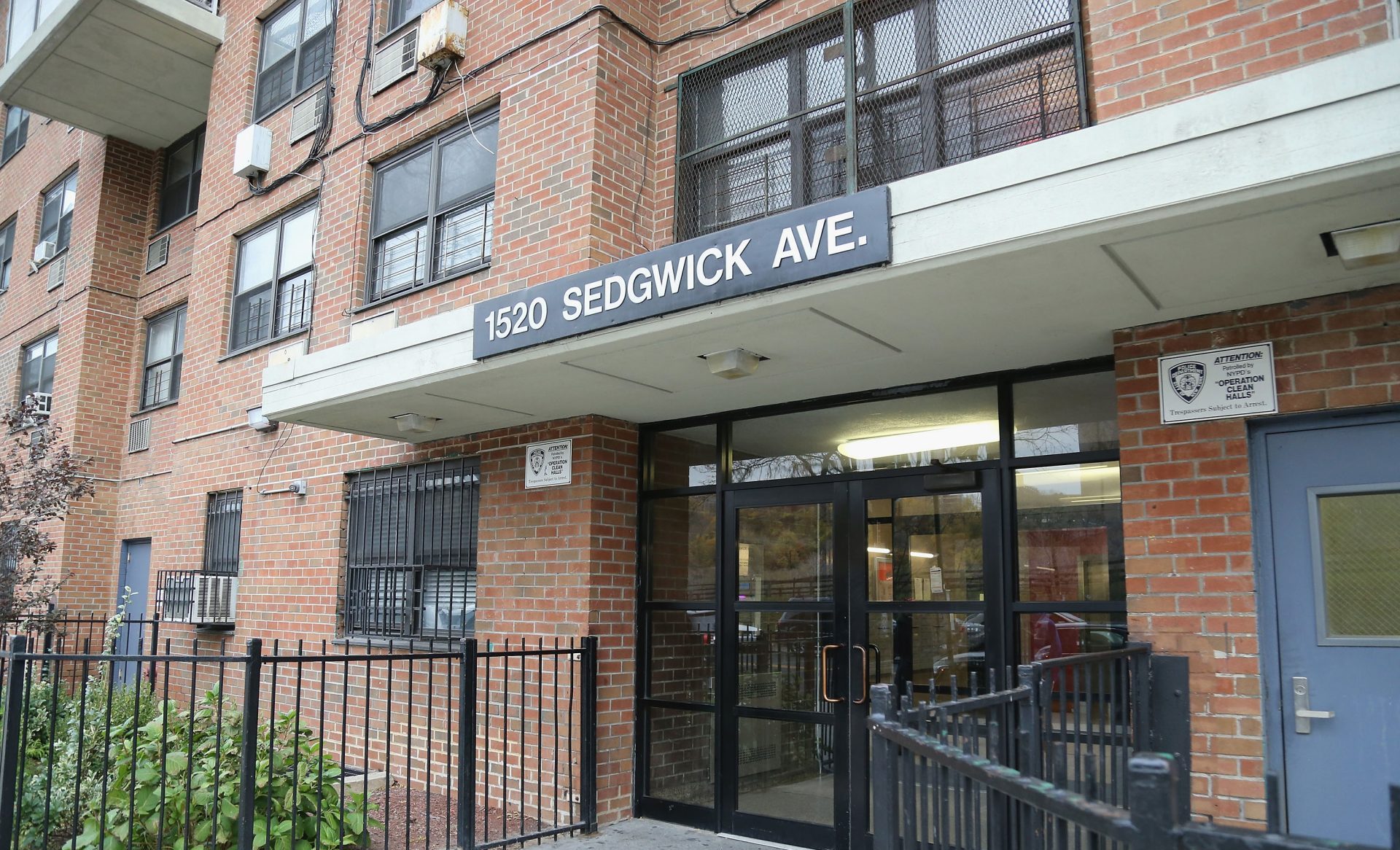

Noam Galai/Stringer/Jack Vartoogian/Getty Images/Frazer Harrison/Getty Images/Johnny Nunez/Getty Images
In honor of Hip Hop’s 50th Anniversary, The Shade Room would like to commemorate the moments, the pioneers, and the tools of the art form which have ultimately transcended the music genre, influencing every aspect of modern-day popular culture. Join us each week as we look back at five decades of hip hop.
As influential as hip hop has grown to be, it’s hard to believe the genre made its roots in a “small community room” on the first floor of a Bronx apartment building. According to NPR, a back-to-school party was hosted by 18-year-old Clive “DJ Kool Herc” Campbell at 1520 Sedgwick Avenue on August 11, 1973.


The “modest” engagement reportedly featured an admission fee of 25 cents for girls and 50 cents for boys. According to History, the event landed a teenage DJ Kool Herc in front of “his biggest crowd ever.” Additionally, he was also equipped “with the most powerful sound system he’d ever worked.”
“Everybody that talks about Herc’s parties back then talks about two things,” author Jeff Chang told NPR. “They talk about the intensity, the pure sound of the sound system — but they also talk about the music that Herc played.”
Until then, Herc had been observing his party-going crowds. Additionally, lending a keen eye to what made them dance and perfecting a DJ technique in response.
“I was noticing people used to wait for particular parts of the record to dance, maybe [to] do their specialty move,” DJ Kool Herc explained, as per History.
Herc found that this moment occurred during the drum breaks of records — when vocals and other instrumentals would briefly be absent. And on August 11, 1973, he tested using two turntables “to switch back and forth” between “two copies of the same record.” This extended partygoers’ dance breaks.
“And when I extended the break, people were ecstatic, because that was the best part of the record to dance to, and they were trippin’ off it,” Herc explained in 1997, as per The Guardian. “After I did it for the first time, there was no turnin’ back – everybody was comin’ to the party for that particular part of my set.”
At the time, Herc referred to the method as the merry-go-round. However, today, it has come to be known as the “break beat.”
Herc’s pioneering of the art would influence pivotal figures to follow such as Joseph “Grandmaster Flash” Saddler. According to his official website, Saddler would invent “The Quick Mix Theory.” The theory includes the DJ technique of “cutting,” “scratching,” and “transforming” the turntables with one’s fingertips.
The practice ultimately elevated the DJ’s “status” in hip hop.
“This allowed a DJ to make music by placing his fingertips on the record and gauging its revolutions to make his own beat and his own music,” Grandmaster Flash’s official biography reads. “He laid the groundwork for everything a DJ can do with a record today, other than just letting it play.”
Afrika Bambaataa is considered one of the godfathers of the musical movement and the founder of the Universal Zulu Nation. According to HipHopElements, the independent organization is the “oldest” and “largest… grassroots Hip Hop organization.” Additionally, the group promoted the five “elements” of the genre.
The elements include emceeing, djing, graffiti artwork, breakdancing, and knowledge, as per ZuluNation.
“Graffiti is the writing of language or the scribe that documents the history. Emcee is the oral griot, the conveyer of the Message. DJing is the [heartbeat], the drum of the art or movement… B-Boy/Girl is the exercise and the human expression through dance or body movement to keep the body in proper health. Knowledge is the reason why we are who we are… where are we today [and] How… we take the artistic expression of Hip Hop and find our purpose in LIFE!”
According to HipHopElements, Bambaataa believed that educating the masses about hip hop and its five elements would shift minority focus to “peace, love, unity… so that people could get away from the negativity… plaguing our streets…”
Editor’s Note: The Shade Room notes that Afrika Bambaataa was reportedly removed from the Universal Zulu Nation in 2016, as per REVOLT. The decision arrived after Bambaataa was accused of multiple instances of sexually abusing minors during his early career. Bambaataa has since denied the allegations.
At this point, although the music genre had been birthed and its elements expressed, it had yet to be given an official name. That is until Kevin “DJ Lovebug Starkski” Smith and the Furious Five’s Keith Cowboy are said to have coined the term “hip hop” while emceeing.
According to Chang, as per Medium, this historic step forward took place at the pair’s farewell party for a friend.
“I’d say the ‘hip,’ he’d say the ‘hop.’ And then he stopped doing it, and I kept doing it… I said a hip-hop, a hibbit, hibby-dibby, hip-hip-hop and you don’t stop,” Smith explained, as reported by Medium.
Decades later, Bambaataa would explain why the term stuck.
“Well, I chose the name hip-hop’ because of the clichés brothers was using in their rhymes—Love Bug Starski and Keith Cowboy from Grandmaster Flash and the Furious Five… I liked the sound of what they were saying… I said, ‘This is hip and when you feel that music you gotta hop to it, so that’s when we called it ‘hip hop.'”
At this point, hip-hop invaded parties of all kinds, the homes of many, and beyond. The DJ’s turntable would become a necessary component to make the celebration possible. However, a new element would begin to solidify its space in the genre: the emcee who would rock the mic.
“They’re seeing folks in the party, their friends, and they’ll shout people out, they’ll do it in these funny little rhymes,” Jeff Chang told NPR while describing the rise of the emcee. “And these rhymes develop into more rhymes, right? You know, shouts and cries that are basically about urging the party to get higher and higher. So they keep on kind of evolving that and that actually turns into rap.”
Curtis “Grandmaster Caz” Brown, a DJ who doubled as an emcee, would lay the foundation for those who rocked the mic after him. Caz became known for his ability to “rhyme and cut” the turntable “simultaneously,” as per OldSchoolHipHop.
Grandmaster Caz would eventually go on to join the Cold Crush Brothers group. Additionally, he reportedly inspired the likes of KRS-1, Big Daddy Kane, and famed rap storyteller, Slick Rick.
In addition to inspiring the aforementioned artists, Grandmaster Caz would also seemingly inspire the group that would make hip-hop mainstream — The Sugarhill Gang. According to OldSchoolHipHop, a member of the group, Henry Jackson, would earn the attention of music industry executive Sylvia Robinson.
Instead of sharing his own lyrical prowess with Robinson, Jackson would allegedly pass off a verse of Caz’s as his own. Then, he would join two other men, Wonder Mike, and Master Gee, in creating The Sugarhill Gang. The group would go on to record their debut record, “Rapper’s Delight,” utilizing Caz’s verse.
On September 16, 1979, the record was released and ultimately reached the top of the charts.
During this same year, the Bronx-bred group, Funky 4, would add the addition of Sharon “MC Sha-Rock” Green to create the Funky 4 + 1. According to Women & The American Story, Green was the “the first female MC of a hip hop group.” Additionally, she was dubbed the “First Lady of Hip Hop.”